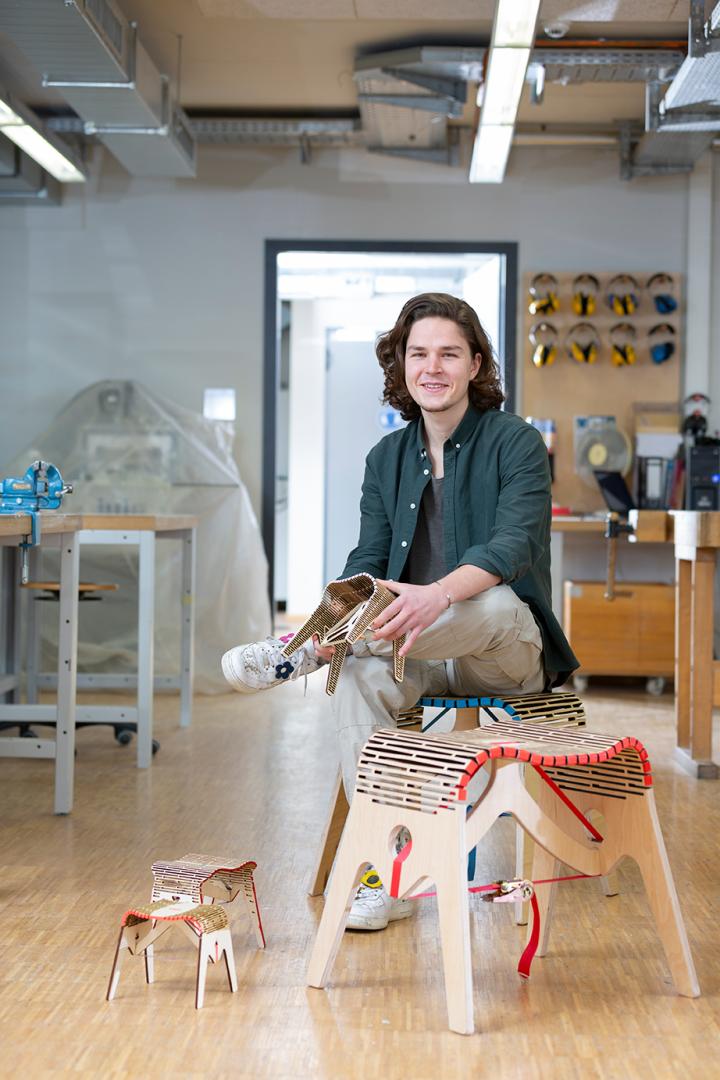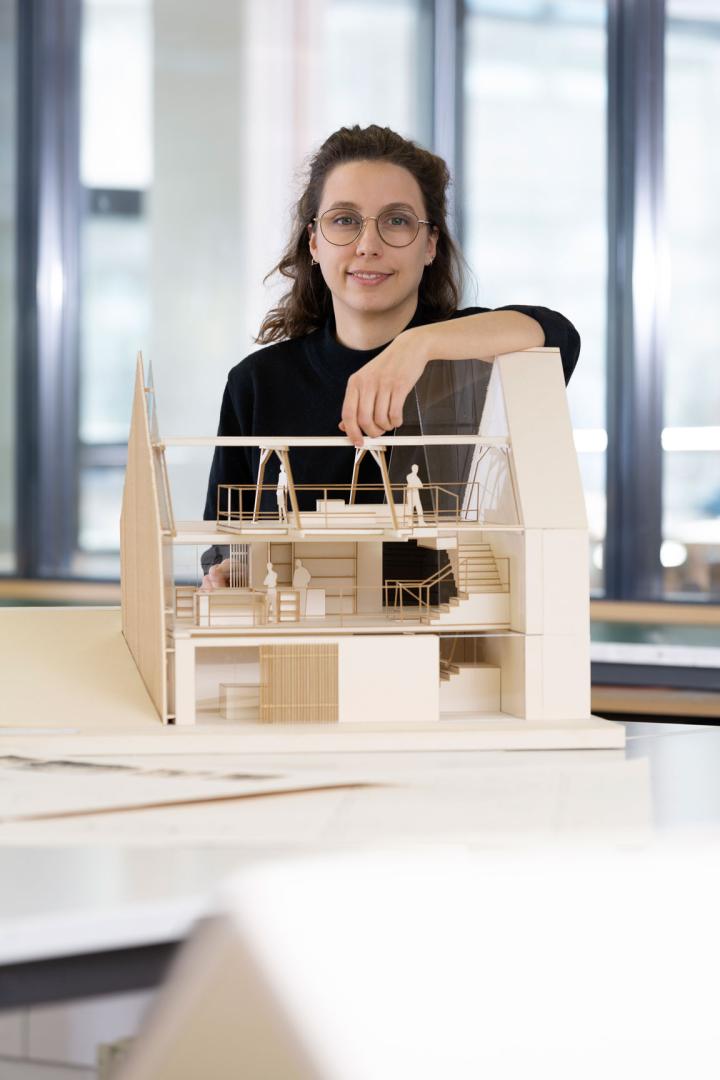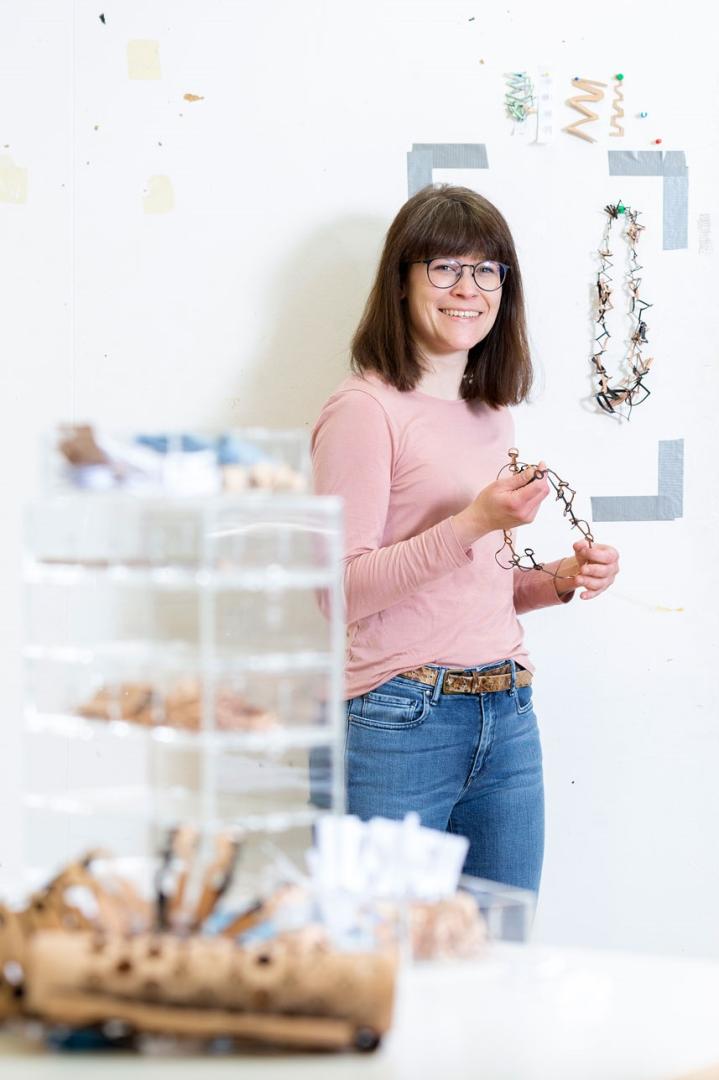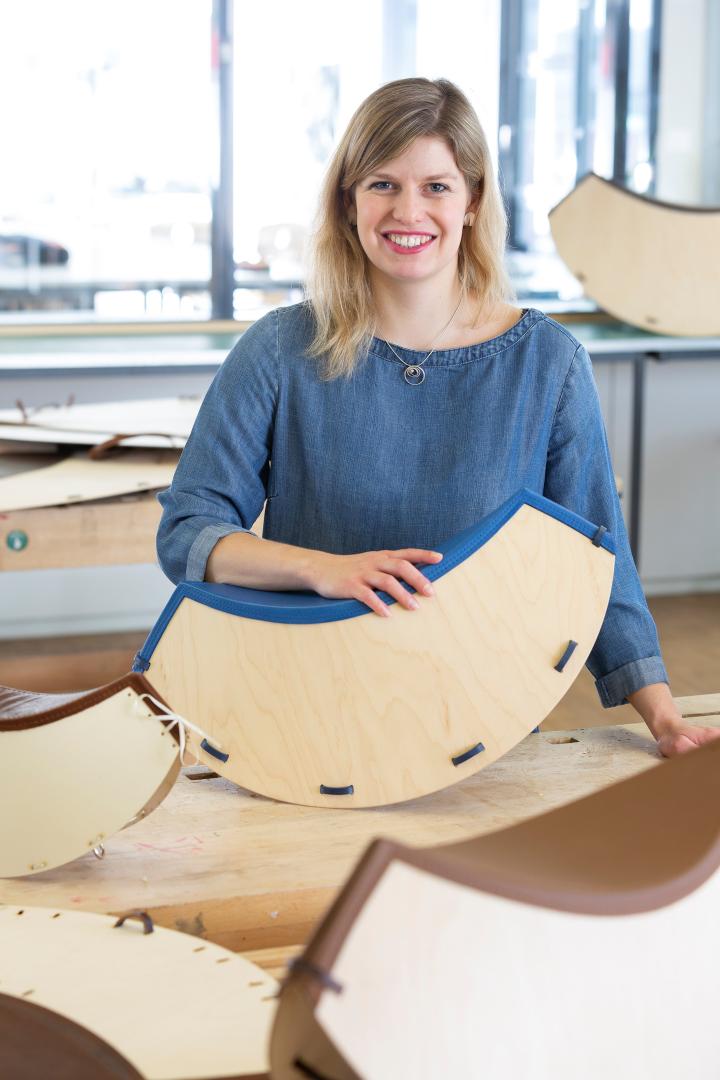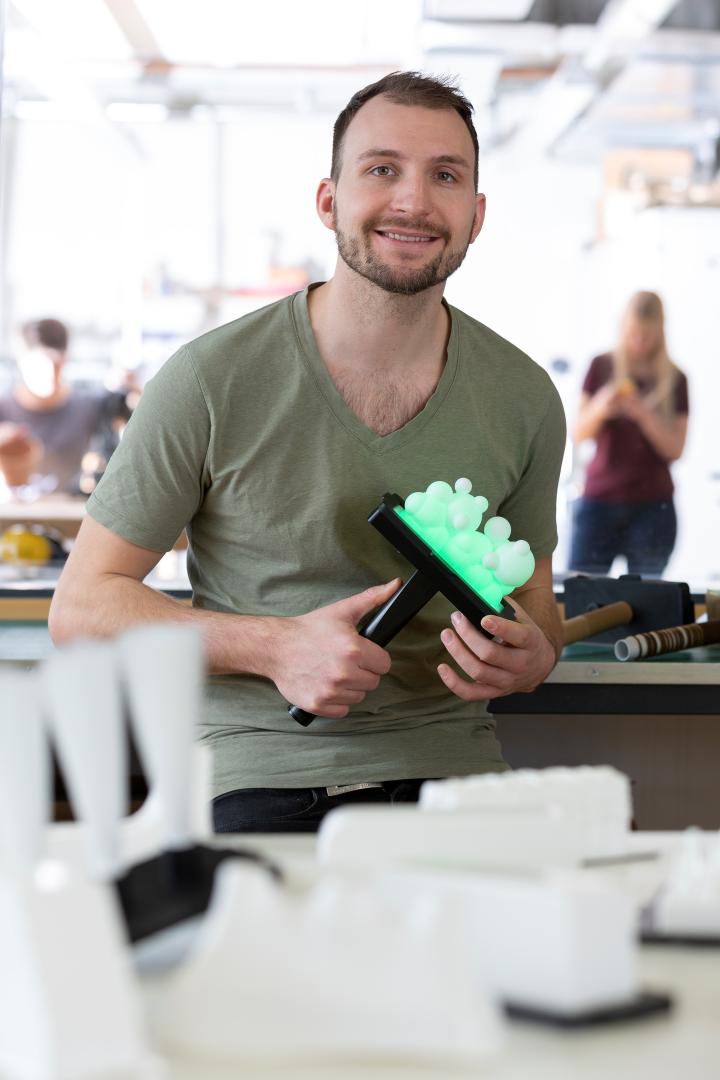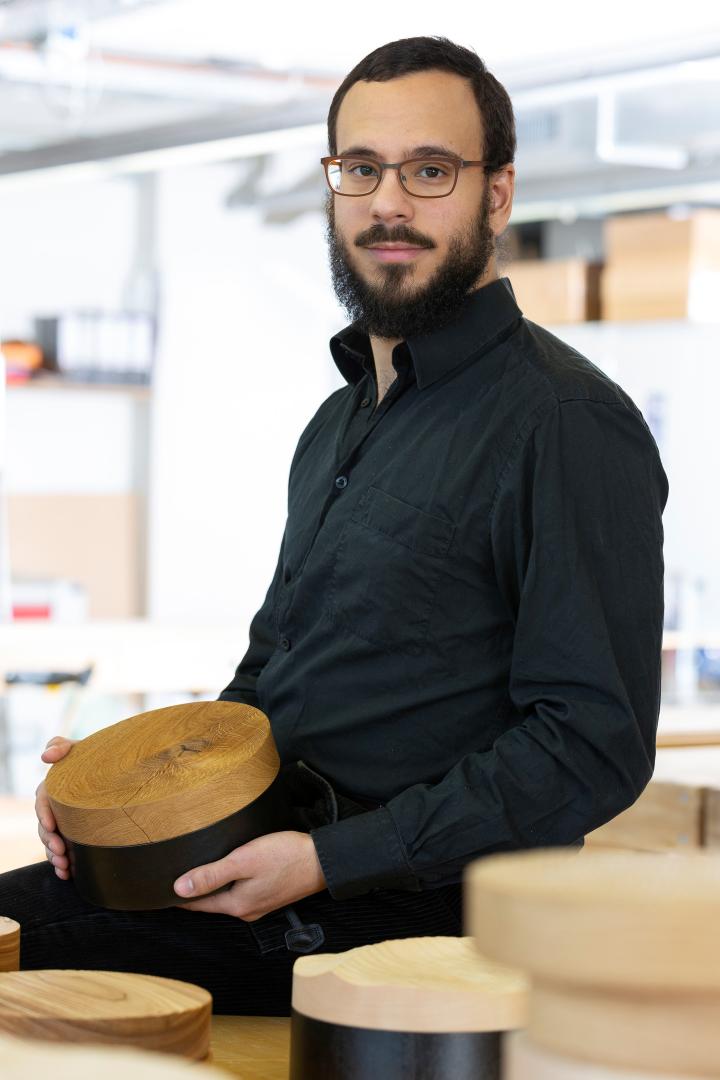Academy for Design in the Skilled Crafts
Basic information
Project Title
Full project title
Category
Project Description
The Academy offers state approved continuing vocational education and training (CVET) for skilled craftspeople from various fields to be a DESIGNER IN THE SKILLED CRAFTS. Within 1.200 hours architects and designers teach them how to transfer and apply design strategies into crafts. Thus they conceptualise ideas for daily life. Sustainable materials and ideas of universal design are the foundation for their products. As a result, the students contribute improved concepts to our cultural heritage.
Project Region
EU Programme or fund
Which funds
Other Funds
Since September 2000 the European Social Fund of Bavaria has supported the part-time training scheme. Skilled craftspeople attend the design training on their weekends - for approx. 26 months (in total about 1200 training hours). The course concludes with an exam to gain the title: “Designer in the skilled crafts”. The funding is a substantial investment in the students` CVET, though since Covid, it is covering 100% of the education fees from September 2020 until 31.12.2021.
Description of the project
Summary
The Academy for Design trains craftspeople in the field of design. Our students combine their designing abilities with their professional manual skills and bring their ideas to life. Thus, they increase their competitiveness against industrially manufactured products and services. When creating, they benefit from their practical experience and merge this with their theoretical knowledge. They unite function, usability, aesthetics and sustainability. In addition, Designers in the Skilled Crafts take in account the interests of target groups such as persons with disabilities. Their cultural and creative work takes influence in our everyday life and requires an awareness of our tradition and development of new perspectives for our future. In the class, they meet creatives from different trades, exchange ideas, transfer skills, co-operate, innovate and network. The official degree “Designer in the Skilled Crafts” opens up the admission to study at a German University on BA level or to academic studies for a Master of Arts degree within the EU. The training is as a specific qualification an official part of further training and on the same level as the master craftsperson´s qualification.
Key objectives for sustainability
Sustainability is a core component of our curriculum. In our teaching about materials, we focus on the concepts of re- and up-cycling. In our material library we present latest developments of wood, glass, metal etc.regarding protection of rare resources and sustainability. Excursions take the path to current trade fairs and companies who regard factors of responsibility and regionality. Our lecturers illustrate and highlight daily practice of implemented sustainability. The idea is, to design tailor made customized products which are made to meet the specific needs of the customer and counteract any throwaway consumer behavior. Raw materials need to be regional and renewable. The finalised products themselves should be durable and reparable by the makers. This attitude and knowledge is passed on to the next generation, as many of our graduates start their own companies and then pass this understanding on to their apprentices.
Key objectives for aesthetics and quality
In our curriculum, we have transferred elements from the classic Bauhaus training to our needs of teaching crafts-persons in the 21st century. During the 1200 lessons and 800 hours of practise we teach: sketching, basics of design, conceptualisation and design, universal design, model-making, 3-D modelling on PC, materials, history of arts and crafts and design, colour design, ornamentation, typography, photography, and design-management. We start teaching from scratch and educate the ability to design projects. The crafts-persons´ expertise with material and manufacturing processes comes to an overlapping with the design processes transferred from architecture and product design. This teaching concept emphasizes the applicability of things in combination with aesthetics and coherence - three of five criteria of our state-recognized examination regulations.
Key objectives for inclusion
tIn our design curriculum, the concept of universal design is an integral issue since many years. The Academy has received already two awards for the teaching concept regarding this engagement.
Regularly we have individual students with special needs in our classes. Sometimes they have experienced accidents thru work or face other health problems like allergies through their work. So they can not carry on in their fields´ production. Through their design skills they regain their employability and substancuially reduce the hands-on work in the workshops. Their profile switches to designing for the company, consulting the clients and educating the apprentices. These students are included and supported equally to the rest of the group. Usually they pass their exams successfully and carry on with their career on a wider spectrum.
As a part of our education portfolio, the Academy offers special hands-on classes for career orientation to refugees and children, since 2015. Some of our graduates teach and give an insight into different crafts through the perspective of design. Thus they offer refugees a creative approach into the crafts field and encourage them to start an apprenticeship which will lead a successful career. The refugees experiment for approx. 16 weeks in different materials and find out in which trade they would like to work. Usually we start with 12-13 refugee-participants and finish with approx. 10 who then sign a contract for a regular apprenticeship in the skilled crafts in or around Munich.
Also for children at the age from 12 - 13 years we offer career orientation classes within different professions in the skilled crafts. Our graduates teach and give insights into their fields. This is a part of their school curriculum. The pupils´ ambitions can be deepened in volontary holiday workshop. Here the pupils experiment again in real-life workshops. They use the professional tools and materials to gain inspiration for their professional care
Results in relation to category
Since 35 years, our graduates from different disciplines find better and higher qualified work within their fields with the qualification as "Designers in the Skilled Crafts". Some take the chance of international exposure in participating in Erasmus+ after their exams and increase their professional radius and network.
When being self-employed the "Designers in the Skilled Crafts" network with architects and designers on eye level. Many of our graduates have been awarded with national and international design prizes which acknowledge the quality of their work and projects i.e. Bavarian State Prize, Talent Prize of the International Crafts Fair, German Design Prize, Universal Design Prize, Aga Khan Award for Architecture and many more. For our graduates the qualified combination of design and crafts skills on this specific level of quality is a key qualification to be competitive and succesfull.
How Citizens benefit
Private clients benefit from improved service and better products in their commissioned projects. They have a better understanding how custom-made and sustainable products can improve their lives. Since many years, we use real examples in our teaching of colour design and ornament design. Two of the retirement homes in Munich got fresh colour design concepts for their buildings and interious and have been freshly painted according to the students´ suggestions.
i.e.
https://www.muenchenstift.de/de/haeuser/pflegeheime/heilig-geist.html
and
https://www.muenchenstift.de/de/haeuser/pflegeheime/effnerstrasse.html
One project in design teaching, the full-time students take an insight into a crafts-workshop for people with special needs. Some of our students´ design suggestions are used in in the production and enrich the product portfolio.
www.sidebyside-design.de
Regularly the Academy invites public audience to “Design Talks” to inform and educate private people and crafts people about the quality and strengths of design in the skilled crafts. Usually 3 talks per year are presented and attended by approx. 80 – 120 visitors. Here we strongly co-operate with the inhouse Galerie Handwerk in The Department of Trade and Crafts in Munich and Upper Bavaria. This gallery showcases arts and crafts exhibitions for over 50 years and presents significant contributions to the skilled crafts culture in Bavaria and as well internationally. By the public´s exposure to the high end quality of skilled crafts and applied arts they better understand the competitiveness and price structure of regional products and the skilled crafts´contribution to our cultural heritage.
Innovative character
Usually crafts-persons do not get a design training during their 3,5 years of apprenticeships. Our design training is a trans-disciplinary foundation to give solid ideas about conceptualising design in the skilled crafts. By linking the design education with their individual fields, our graduates feel more related to their work and have a higher level of identification. They improve in developing their ideas, increase their personality and significantly rise the quality of their work. Such they take more pride and responsibility for the results. Design as a driver of innovation also inspires our graduates to be more innovative than other crafts-persons. "Designers in the Skilled Crafts" transfer techniques and designs from other fields or different cultures. They are open and interested to various cultural and international inspirations. Thus they are open to travel with Erasmus+ and come back to their regions. Many of them continue their family bussines as a next generation. Thus they contribute to their regional economy on a very high professional level and with an individual profile.
It is enriching for the field of skilled crafts to increase this positive peer group of inspirers and networkers. Also for the coming generation these positive personalities offer orientation for own ideas of their career.
These positive effects of our design education also includes, that young women take the courage and a stronger interest in the field skilled crafts. Approx. 50% of our students are female. They stay longer in their jobs as they find new and individual perspectives in often male dominated professions.

